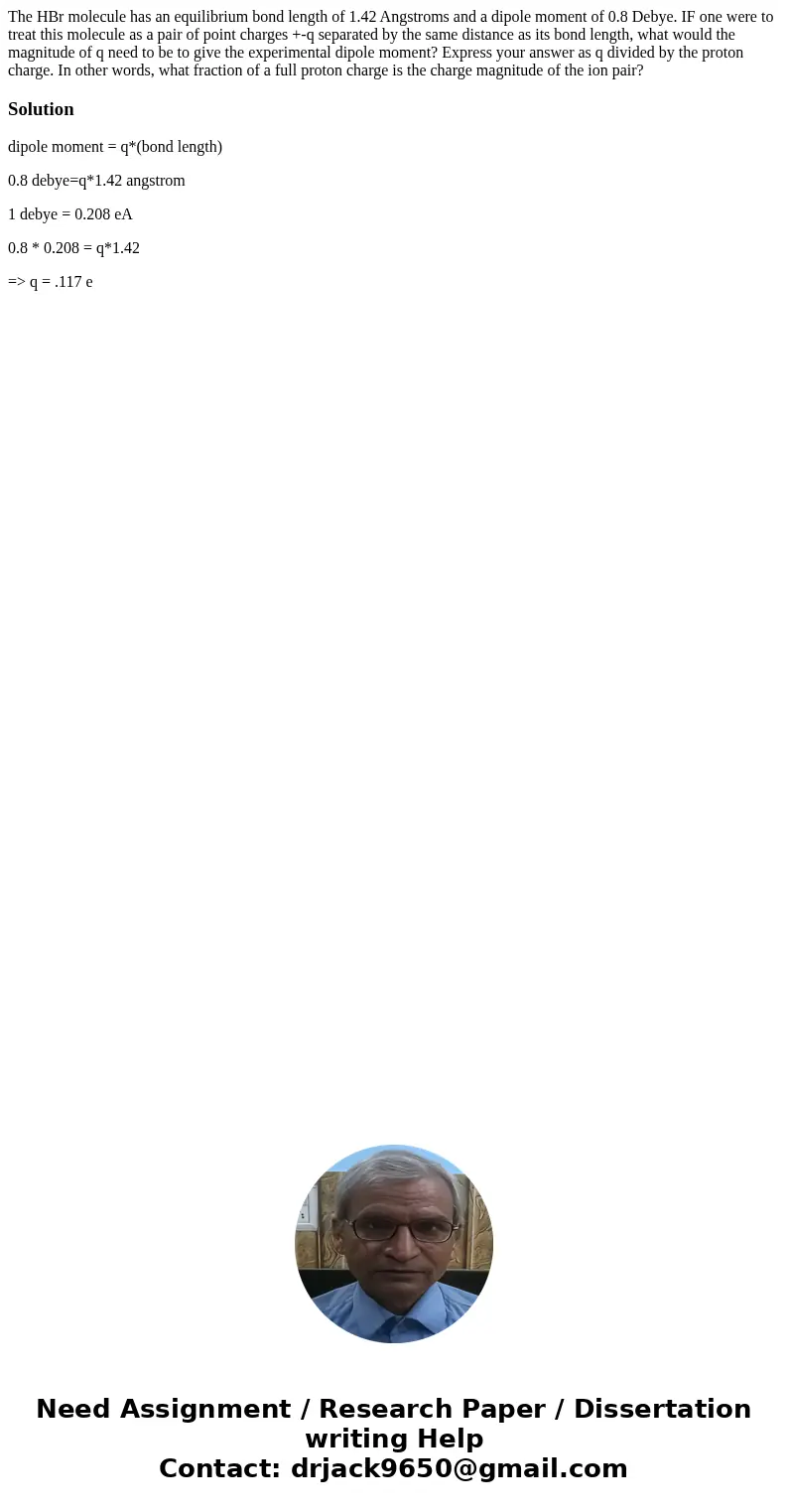The HBr molecule has an equilibrium bond length of 142 Angst
The HBr molecule has an equilibrium bond length of 1.42 Angstroms and a dipole moment of 0.8 Debye. IF one were to treat this molecule as a pair of point charges +-q separated by the same distance as its bond length, what would the magnitude of q need to be to give the experimental dipole moment? Express your answer as q divided by the proton charge. In other words, what fraction of a full proton charge is the charge magnitude of the ion pair?
Solution
dipole moment = q*(bond length)
0.8 debye=q*1.42 angstrom
1 debye = 0.208 eA
0.8 * 0.208 = q*1.42
=> q = .117 e

 Homework Sourse
Homework Sourse